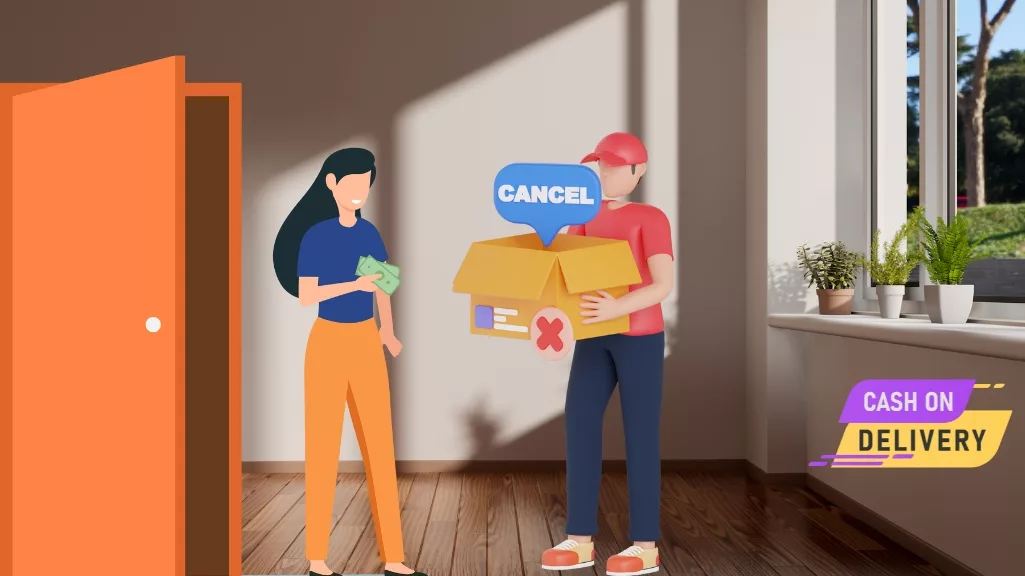India's vibrant internet market is not only large, but also expanding and evolving rapidly. This dynamic e-commerce sector sees companies like Amazon, Flipkart and Ecom Express tackling major challenges. Delivery failure.
Known as RTO (return to origin) In e-commerce jargon, delivery failures most commonly occur when a customer selects the Cash on Delivery (COD) payment method when placing an order.
According to ET Prime Research, Around 60%-65% of e-commerce orders in India are made on cash on delivery.. Surprisingly, 25%-30% of these orders are fulfilled in RTO.
In contrast, delivery failure rates for prepaid orders are only 2% to 3%. This difference highlights the unpredictable nature of customer commitment when choosing cash on delivery, which can lead to a higher incidence of order cancellations.
Now, let us understand what delivery failure actually means in the e-commerce industry and why it happens.
The failure of cash on delivery in e-commerce
When a purchased item is returned or a delivery is unsuccessful, a process known as reverse logistics kicks in. This includes two scenarios:
- Reverse Pick-Up (RPU): If the delivered item is later returned by the customer.
- Return to origin (RTO): If the Customer does not accept the delivery, the product will be returned to the warehouse or Seller's location.
Reverse pickups are estimated to account for up to 5% of overall shipments, but the incidence of returns to origin is significantly higher, ranging from 40% to 50%.
Root causes of delivery failures
As e-commerce adoption continues to surge in India, the number of returned goods (RTOs) is also increasing over the years. This trend is largely due to the widespread use of Cash on Delivery (COD) as the primary payment method among Indian customers.
In December 2022, e-commerce enablement company GoKwik reported that cash-on-delivery transactions accounted for around $30 billion of India's e-commerce market.
Unlike developed countries, where customers tend to only place an order if they are truly intent on buying, Indian shoppers often prioritize cost savings and continue to search for the best deal even after placing an order.
Explaining the behavior of Indian shoppers, Ankush Jindal, Associate Director at e-commerce logistics aggregator Shiprocket, explains that Indian customers are aware that opting for COD gives them the flexibility to reconsider their purchasing decision. Even after placing an order, customers may continue to look for price discounts and cancel the order if they find a better deal on another platform.
Another reason why products are sent back to their place of origin in India is when customers are not able to collect the parcel, cannot be contacted during delivery, the address is wrong, they change their mind during the delivery of the parcel and cancel the order etc. Moreover, there are also cases where the parcel arrives at the address but the customer refuses to accept the delivery as they do not want the product anymore.
Many developed countries have low RTO rates due to the lack of availability of cash on delivery (COD) and transactions rely primarily on prepayment. However, countries such as Saudi Arabia, UAE, Indonesia and the Philippines also have adopted COD. As a result, in the UAE and Indonesia, RTO accounts for 15%-20% of COD orders.
The impact of returns on D2C brands
The impact of the return policy is felt across all e-commerce platforms in India, but it poses particular challenges for new Direct-to-Consumer (D2C) brands. If a significant portion of cash-on-delivery orders are shifted to the return policy, it could have a major impact on the company's financial performance.
Social commerce, another e-commerce sector in India, Additionally, RTO rates are very high, often reaching 35% to 40%..
The additional costs of returns are largely borne by the merchant, who not only has to pay for the return but also for the shipping costs of the goods. This additional financial burden can be particularly significant for smaller brands.
Highlighting the impact, Ankush Jindal of Shiprocket highlighted that big brands with high order volumes will be able to negotiate lower freight rates with their logistics partners, easing some of the financial burden.
Additionally, returns often take much longer than the outbound journey, potentially resulting in product damage and inventory loss, which not only impacts merchants, but can also affect customer satisfaction.
For large brands, even a 5% RTO rate has a significant impact due to high order volumes and the total cost of RTO is substantial. The industry has gone through a learning curve to address RTO and now sees it as a 50:50 issue from both the logistics and consumer side, rather than just a logistics issue as previously thought.
In a nutshell
To mitigate RTO, all brands must employ various strategies, including customer profiling based on historical data to predict the likelihood of cancellations, address correction tools, and interventions such as deterring high-risk customers with partial payment options or levying fees on COD orders. However, these solutions come with trade-offs that can lead to lost orders and increased operational complexity.
As long as COD aims to become the primary payment method, managing return shipment (RTO) incidents will continue to be a major challenge for Indian e-commerce players, and the industry needs to focus on identifying and implementing effective solutions to reduce COD failures without compromising customer satisfaction.


